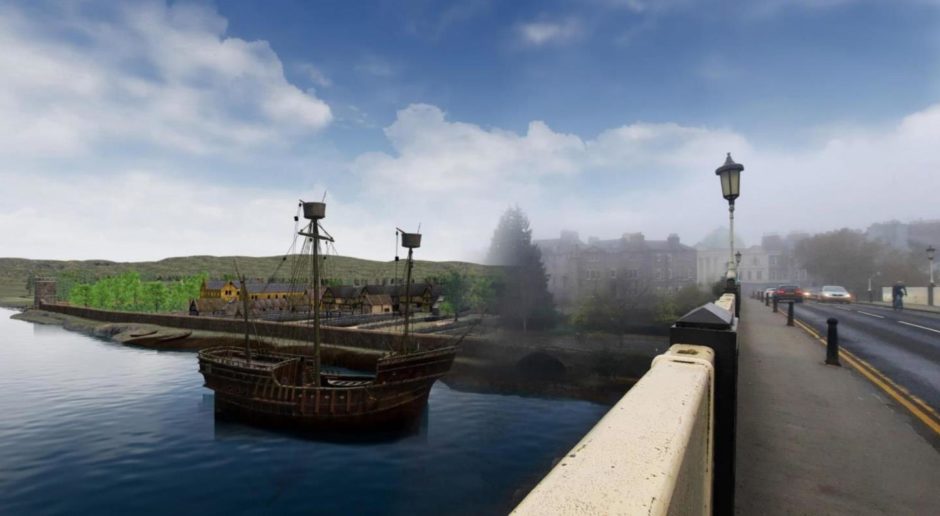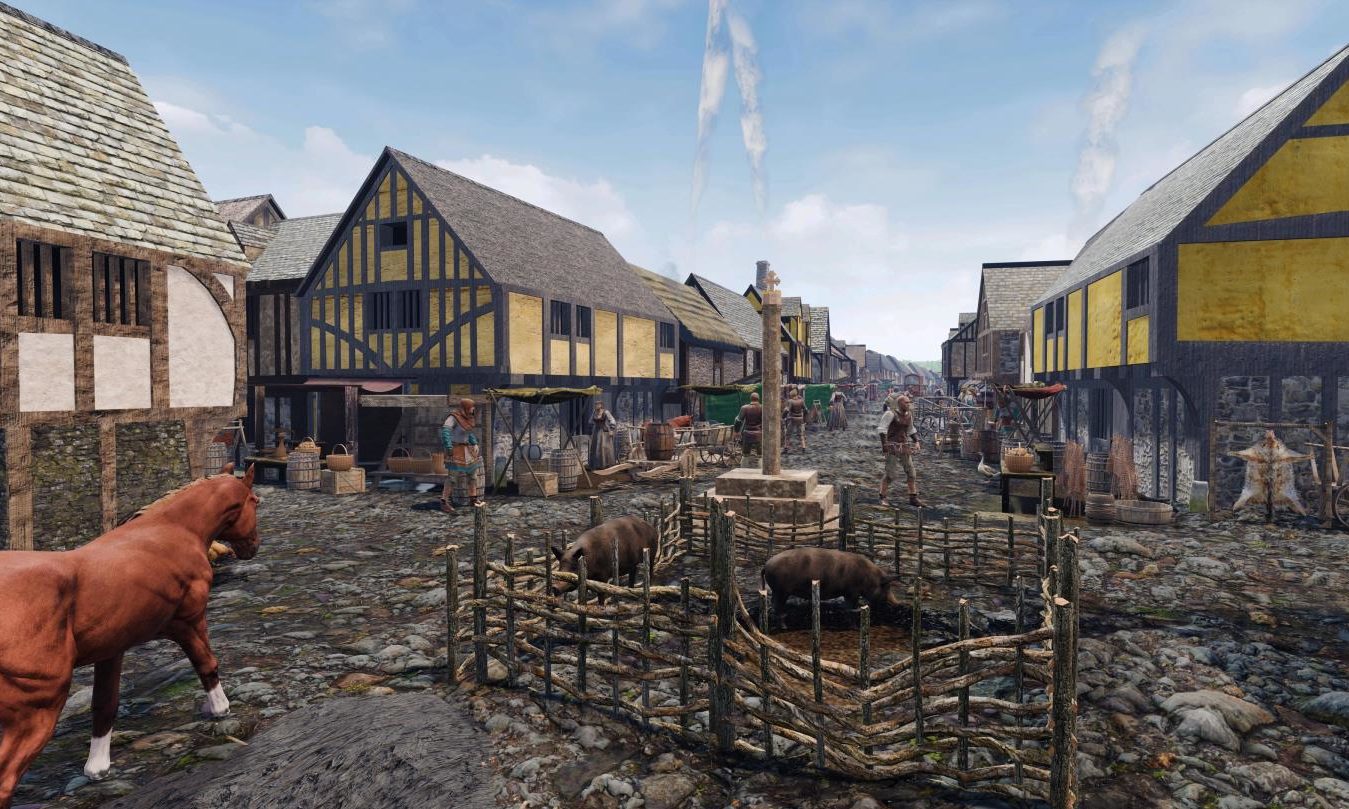People in Perth can take a trip back in time to see how the city looked in medieval ages.
Perth and Kinross Council has installed a series of interpretation panels around the city centre that tells the story of the medieval burgh from the 1400s.
Each of the 12 panels will include text and images, along with a link to virtual reality videos, showing how Perth looked in 1440.
You can even “meet” characters along the way, who will act as virtual tour guides.
Perth and Kinross Heritage Trust has been working alongside Pavo Interpretation of Perth and Smart History of St Andrews University to deliver the project and create digital 3D environments and characters for the immersive mobile app.
‘Immersive experience’
Trust director David Strachan says: “Perth was a very important and wealthy burgh back in the Middle Ages, known for the high quality of the crafts it produced.
“We know a huge amount about everyday life thanks to archaeological remains and finds, such as those from the High Street excavations in the 1970s.
“We’re hoping this exciting new approach to sharing the past will help us to reach new audiences with a tech interest.”

Dr Alan Miller, lecturer in computer science at St Andrews University and director of Smart History, said: “We were delighted to collaborate on this great project to represent Perth’s past.
“Using technologies originally derived from computer games, we have created an immersive experience, which will enable people today to visualise the rich history that lies beneath their feet.”
Virtual characters included in the tour will include historical Perth residents, such as goldsmith and burgess Andrew Lufe, allowing users to find out more about their lives.
Sarah Kennedy, a research fellow in computer science at St Andrews University who modelled the construction, said: “We used 3D modelling and gaming technologies to bring to life the busy streets, markets, religious buildings and homes of Perth in the Middle Ages.
“We hope this shows people how the medieval street layout is still recognisable in the Fair City today.”
Helping Perth’s economy
Perth and Kinross Council leader Murray Lyle said: “Perth has a long and illustrious history and these boards do a fantastic job of showing what life would have been like here in the 15th Century.
“We’re also looking to do more to bring visitors to the city centre and I’m sure these will be of huge interest to tourists and residents alike.
“As we emerge from the coronavirus pandemic, attractions like these, St Paul’s and Perth City Hall will be critical in helping Perth recover from the economic effects of the virus.”
Perthshire landmark with medieval connections focus of new hidden history trail
